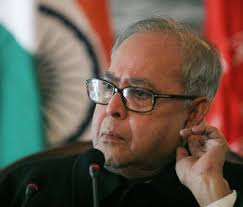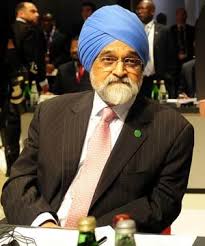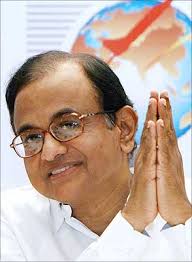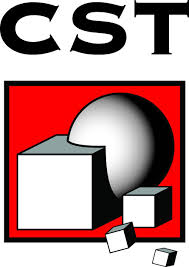
Ease of Doing Business: Incremental Steps But Right Intent
The major concern surrounding private investment in India has been the ease of doing business. The budget addresses some of these concerns, albeit through incremental measures. Clarification of the capital gains treatment on the conversion to LLPs will ease compliance requirements for private businesses that convert. The easing of tax audit limits, some rationalization in the limits for TDS and the increased time limit for payment of Tax Deduction at Source will also ease compliance, especially for small businesses. That the rollout of the Direct Tax Code was not delayed beyond 1 April 2011 is also a signal in the right direction towards a simplified tax regime. Granting additional banking licenses should aid the flow of industrial credit. However, these have only been incremental steps and measures towards higher FDI limits and a simplified corporate law would aid this further.
--Sidharth J. Negandhi
Giving the Bottom of the Pyramid its Due
The budget has laid down a roadmap towards inclusive growth with clear measures to promote growth at the bottom of the pyramid. The rollout of the nutrient-based subsidy augurs well for agricultural productivity. Seeking private participation in food grain storage capacity and allowing external commercial borrowing to be raised for food processing is a step forward in creating a robust food supply chain that benefits producers though more concrete measures such as tax holidays may have acted as additional stimulants. Also, a mere moratorium for payment of farm loans as opposed to a waiver signals that the onus of performance lies with the farmers. Setting up a national social security fund and the interest subvention for low cost housing create a rounded structure for development at the bottom of the pyramid.
--Sidharth J Negandhi
A New, Definite Direction Towards a Direct Tax Code
Budget 2010 is a turning point in the move from the current tax regime to the Direct Tax Code. The extent of the measures may be argued in light of sufficiency, but the direction and intentions are very clear. The reshuffling of the tax slabs upwards is a step towards what the DTC regime proposes. Increase in the 80C (includes provident fund, life insurance premium, pension plans, mutual fund investments, infrastructure bonds and national savings certificate) exemption limit. especially targeting the infrastructure sector is also a key reform. The increase in the limit for tax audit, reduction of surcharge for companies, allowing business activities up to Rs. 10 lakhs, introduction of the Saral II form for individuals, change in provisions for deductibility vis-à-vis late deposit of Tax Deducted at Source are all steps towards rationalizing the tax regime into one that is more tax-payer friendly and transparent.
--Manas Mody
No More Holiday for the Tech Sector
Disappointing the IT & ITES sector, the finance ministry decided not to extend the tax holiday beyond its expiry on March 31, 2010. In addition, the Minimum Alternative Tax has been increased to 18% from 15%. As a result, the IT & ITES sector will be adversely affected. The sector contributes about 25% of India's export revenues and about 5% to GDP. This sector employs about 10 million people directly and indirectly. Clearly, sustenance and growth of the IT & ITES sector is essential if India's economy is to achieve double digit growth. Also, given the macro-economic environment and the need of the IT & ITES companies (especially the small and medium-sized ones) for fiscal support, it would have been most prudent to extend the tax holiday for a few more years. Unfortunately, the budget turned out to be unfavorable.
--Mahesh Yellai
Positive Though Slow Move Towards Fiscal Consolidation
The budget has retained Service Tax at 10%. The base excise duty rate on major non-petroleum products have been hiked to 10% from 8% as a roll back of the stimulus measure taken last year. These moves outline a positive movement towards fiscal consolidation. The fine print says that the proposal for common rates for a wide variety of products and services go beyond just intent and actually pave the way for a smoother implementation of Goods and Services Tax code by the new proposed deadline of 1st April, 2011. However, considering that the current year is a non election year, the measures could have been more drastic especially given that the Direct Tax Code has also been pushed to a later implementation date. The budget also does not make any amendments to Central Sales Tax rates which were proposed to be phased out gradually prior to the commencement of GST.
--Somesh Satnalika
A Lack of Political Will in Education
It is a watershed year for the education sector in India with the Right to Education Act becoming operational from April 1, 2010. The budget has increased the allocation for education to 31,036 crore rupees from 26,900 crore rupees. The states will have access to a further 3675 crores through the Finance Commission. While this is a higher allocation, this still constitutes only about 4.5% of expected GDP, much lower than a number of other developing nations. The Finance Minister has followed the old adage of throwing more money in to build more schools and hard infrastructure, and there is no clarity on proposals for improving the quality of instruction and teachers. Year after year, we find that the Sarva Shiksha Abhiyaan has unspent amounts, and increasing inefficiencies in the delivery of quality education. The budget has stopped short of any firm commitment for the implementation of the Right to Education Act or providing the right incentives for state and private players to contribute to this mission. Overall, a plaid budget for the education sector, displaying a lack of political will to implement the Right to Education Act and making quality education a reality for all the children.
--Vignesh Nandakumar
More Money in Consumers' Pockets
The Finance Minister's promise of making the budget for the common man's benefit was fulfilled at least in terms of direct taxes. From the point of view of the individual tax payer the increase in slab limits, with the maximum slab over Rs 8 lakhs to be taxed at 30% aims to provide relief to over 60% of tax payers.
For Indian companies too there is a strong promise with the introduction of the new direct tax code from April 1, 2011. However, the Minimum Alternate Tax increase from 15% to 18% is a bit of a blow. The budget aims to earn a net gain from direct taxes of approx Rs 20,500 crores which will put more money in the hands of the consumer and in turn boost consumer spending.
--Salome Shah
Positive Budget for New and Existing Sources of Power
This is a remarkable budget for the energy sector, particularly given the visible and strong steps taken towards renewable power. The allocation of Rs 1000 cores towards the Jawaharlal Nehru National Solar Mission and the establishment of a Clean Energy Fund are very positive stimulus for further investment by the private sector and towards making India a significant renewable energy player. The budget has kept all supply options open by providing an allocation for micro-hydel plants, particularly in parts of the country where it makes more sense, e.g. Ladakh.
The budgetary allocation for addition of power capacity has been doubled from last year – particularly focused on introducing critical technology into the sector. This, coupled with the change in the Mega Power Policy, is likely to bring down the cost of power. The introduction of new technologies will also hopefully increase the efficiency of our power plants and transmission and distribution.
The establishment of a Coal Regulatory Authority for competitive bidding of the coal reserves is a step in the right direction to encourage more players to enter the field, thereby allowing for more efficient usage of limited resources, and will serve to break the entrenched monopoly in the coal sector.
In all, a very positive budget for the power sector, for both the existing and new sources of power. This could genuinely translate into more innovative technologies transforming the sector and a significant increase in output to meet current demand.
-Vignesh Nandakumar
Markets Cheer Budget 2010
With uncertain signals emanating from North Block, the expectations for Budget 2010 were extremely low. Markets were thus pleasantly surprised by a balanced budget that may be best described as one that signaled the continued commitment to the reforms process, managing the fiscal deficit and spurring economic growth. The attempts to spell out implementation timelines for programs such as the Goods and Services Tax and the Direct Tax Code, as well as take action on items such as fuel prices was clearly appreciated. While consumption is linked more to credit, markets cheered the message from the minister that he will put more money in the hands of consumers through changes in the personal tax structure. While questions remain on issues such as whether an extension of debt repayment would indeed improve banks' non-performing assets, and how firm the plans are to make the famed GST and DTC operational in April 2011, the overall feel good nature and the lack of unpleasant surprises buoyed market sentiment. [As of about 2:20, the Sensex was up 281.75 points, at 16,535.95.]
--Prashant Krishnan
More Licenses to NBFC and Private Players, a Welcome Move
Overall, the Budget announcements spell good news for the financial sector. However, the implementation and regulations to follow will determine the efficacy and benefits to be derived from the changes made.
Given that the lion's share of the populous banks are the Public Sector Unit banks, the Rs. 16,500 crore allocated to PSUs could help them revamp their operations and bring in greater efficiency and raise the standards of services offered. It would also serve to help them expand operations and mobilize savings in rural areas and small towns.
The icing on the cake is more licenses to Non Banking Financial Companies and private players, something they have been eagerly waiting for and which comes to them in small numbers. For this reason, they are traditionally concentrated in bigger towns and have not managed to extend their reach. Their presence in Tier-2 cities would not only give consumers more opportunities to borrow and invest but it will also raise standards of public sector offerings in the same area. Regulation though will continue to have to be watched in this space.
Hopefully, this will provide a stimulus for the economy to move towards greater freedom to multinational banks and financial institutions.
It was disappointing to not hear of any increased Foreign Direct Investment limits in banks/insurance companies/stock exchanges which would help develop the financial sector further.
--Husna Ilyas Ghouse
Exemption on Long-term Infra Bonds, the Only Silver Lining for Infrastructure
The proposals for infrastructure in the Union Budget 2010 were disappointing to say the least. No mention of the subsidy roll-back, in line with the Parekh committee recommendations, means that the government will have to foot an unserviceable and rising subsidy bill for yet another year. The 1 rupee hike in central excise duty seems a half-hearted measure of controlling the subsidy bill. What was more disheartening was the opposition outburst and walk-out on this announcement, which indicates that it might be passed on to citizens.
On the taxation front, the repeated postponement of the Goods and Services Tax by another year to April 2011 was again disappointing. While the centre-state revenue sharing arrangements still need to be resolved, yet another year is a long time and the country will lose out on the immediate efficiency improvement s that the GST will bring on the infrastructure and logistics front. In addition, what's to say that the government will stand by its promise of implementing the GST next year as well – just another case of bureaucratic lethargy?
The silver lining is the exemption of 20,000 rupees on personal income for long-term infrastructure bonds, which should stimulate retail investment in infrastructure.
--Kartik Rajendran
Is Simply Pushing the Nutrient Fertilizer Subsidy Program Enough?
While it was heartening to hear the finance minister announce the introduction of nutrient-based fertilizer subsidy program from 1 April 2010, this might not be enough to alleviate sector concerns.
Rather than the fertilizer subsidy regime, the inputs going into the subsidy calculations – global raw material prices, energy consumption contirbute more to cost build-up.
Though the new regime will compensate fertilizer companies for the costs they incur, it will help little in optimization of the costs themselves. The finance minister has failed to lay out a management framework that would insulate against volatile commodity prices, energy consumption inconsistencies and ensure overall operational efficiency. The mere implementation of the new nutrient based regime will more likely pass on the burden to the tax payer.
--Soumitra Sharma
![[India broker]](http://si.wsj.net/public/resources/images/OB-HR477_indiat_D_20100226034514.jpg)






















